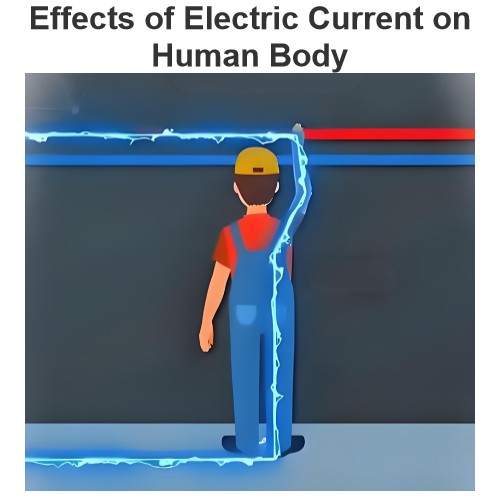Why is it dangerous to touch the poles of an unloaded power supply?
Touching the poles of the power supply without a load is dangerous for several reasons
Risk of electric shock
Human conduction
The human body is an electrical conductor, and when the poles of the power supply are touched, the current passes through the body to form a loop. If the voltage of the power supply is high, the current may reach dangerous levels and cause electric shock injury to the human body.
For example, the voltage of household electricity is usually 220 volts, which is enough to cause serious electric shock injury to the human body. Even a low voltage power supply, such as a battery pack, can cause harm to the human body under certain circumstances.
Current path
The path the current takes through the body has a big impact on the degree of injury. If the current passes through vital organs such as the heart and brain, it may cause serious consequences such as cardiac arrest and respiratory arrest.
For example, when a person touches the poles of a power supply with their hand, the current may flow from one hand through the body to the other, or flow from the hand through the body to the foot. This current path can pass through vital organs such as the heart, increasing the risk of electrocution.
Electrical hazard
Arc burn
An electric arc may occur when the poles of the power supply are touched. An electric arc is a strong electrical spark that is extremely hot and can burn human skin instantly.
For example, in the vicinity of a high-voltage power supply, even if there is no direct contact with the poles of the power supply, arc discharge may occur because of proximity, leading to serious burn accidents.
Explosion risk
In some cases, touching the poles of the power supply can cause an explosion. For example, if the power supply is connected to flammable and explosive substances, such as gasoline, natural gas, etc., the current may cause a spark, which can cause an explosion.
In addition, some large-capacity battery packs may also explode when they are shorted or damaged by external forces, causing serious injury to the human body.
Inadequate safety measures
Lack of protection
The power supply without load is usually not installed with protective devices, such as leakage protectors, circuit breakers, etc. These protective devices can quickly cut off power in the event of an accident such as electric shock or short circuit, reducing injuries.
When touching the poles of the power supply without a load, if there is no protective device, the current may continue to pass through the human body, increasing the severity and duration of the injury.
Unpredictability
The state of a power supply without a load may be unstable, and its voltage and current may change suddenly. This unpredictability increases the danger of touching the poles of the power supply.
For example, some power supplies may have faults or abnormal conditions, such as voltage fluctuations, short circuits, etc., which may be difficult to detect in the absence of load, but once touched the two poles of the power supply, it can lead to serious consequences.
The Electricity Encyclopedia is dedicated to accelerating the dissemination and application of electricity knowledge and adding impetus to the development and innovation of the electricity industry.













